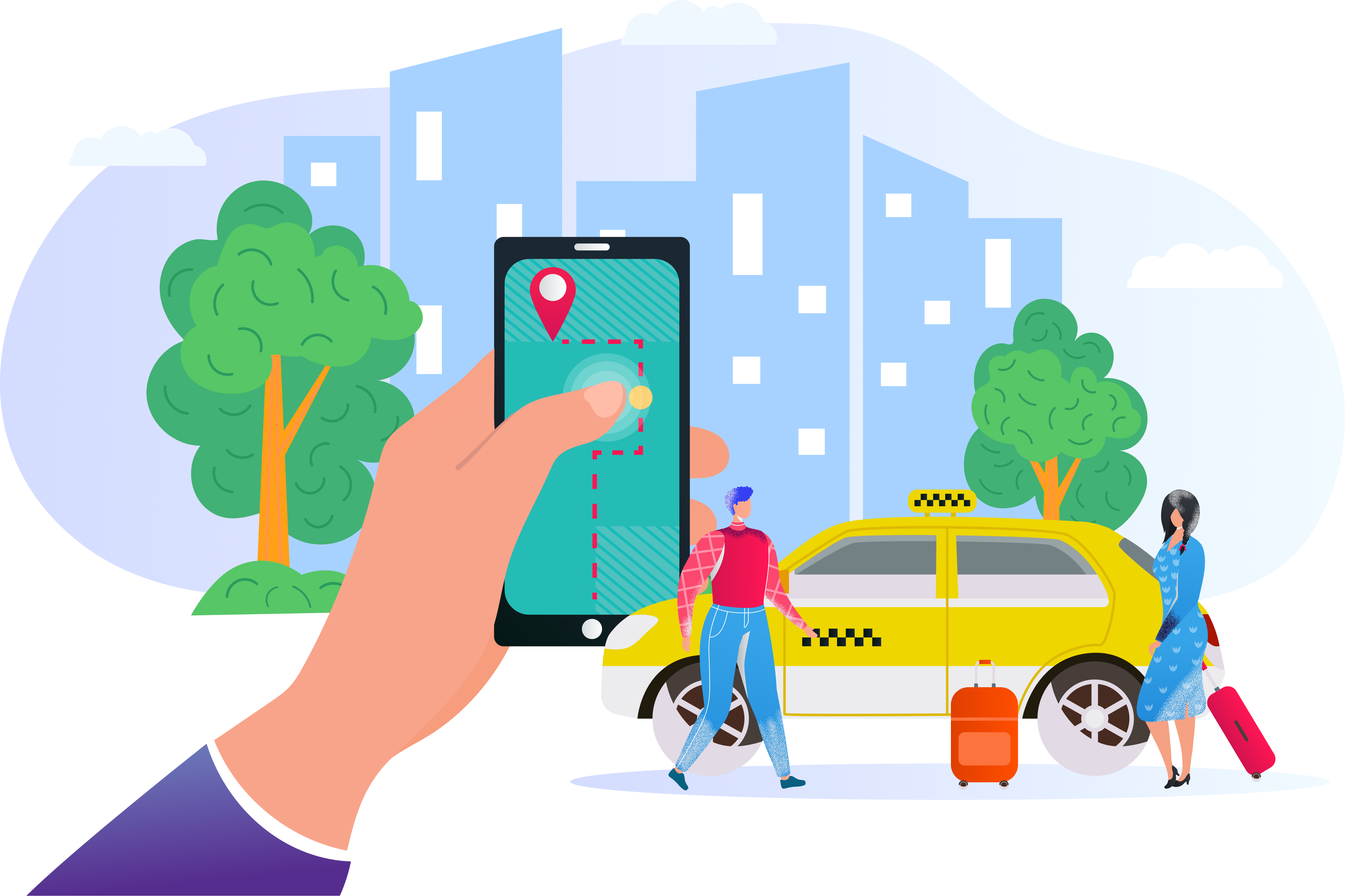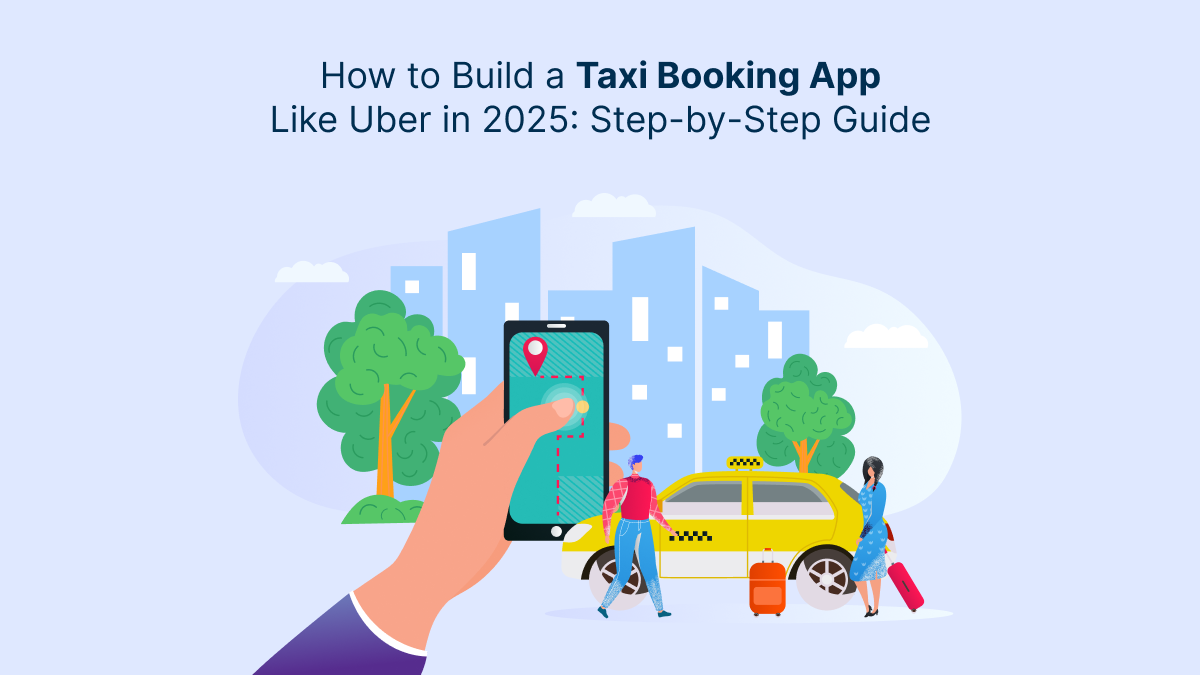In 2025, the ride-hailing industry continues to boom, driven by convenience, technology, and the demand for on-the-go mobility. Apps like Uber have changed how people travel by offering instant ride booking, real-time tracking, and cashless payments. For entrepreneurs, building a taxi booking app like Uber presents an excellent opportunity to tap into a profitable market. But how do you create one successfully?
This detailed guide will take you through the entire process — from understanding the business model and market trends to developing the app step-by-step. Whether you’re a startup owner or an established transport business, this blog will help you understand how to build a scalable and user-friendly taxi booking app like Uber in 2025.
Understanding the Taxi Booking App Market in 2025
The taxi booking industry is growing rapidly, and technology continues to reshape it. In 2025, consumers are more tech-savvy, expect faster service, and prefer apps that simplify their daily travel. Uber, Lyft, Ola, and Bolt have already set high standards. However, there’s still room for new players who can offer competitive pricing, better service, and innovative features.
A major reason behind this continuous growth is the shift in consumer behavior. People are now choosing convenience over owning cars. Rising fuel prices, traffic congestion, and limited parking spaces make ride-hailing apps a practical choice. With sustainable transportation becoming a trend, many startups are now offering electric taxis, carpooling options, and green travel choices.
If you are planning to build a taxi booking app like Uber, 2025 is the right time to enter the market with new innovations and smarter technology.
Key Features of a Taxi Booking App Like Uber
Before you start development, you need to understand the essential features your app should include. A taxi booking app has three main panels — the passenger app, the driver app, and the admin dashboard.
Passenger App Features
The passenger app should be simple, user-friendly, and efficient. The goal is to make booking a ride as easy as possible. Key features include user registration, booking interface, real-time tracking, estimated fare calculation, and multiple payment options.
Passengers should be able to register easily using their phone number or social media accounts. Once logged in, they can enter their pickup and drop-off locations. The app should display nearby drivers and allow users to choose their preferred vehicle type — economy, premium, or shared.
Real-time tracking enables passengers to see the driver’s location, estimated arrival time, and ride progress. Including multiple payment methods such as credit/debit cards, wallets, and UPI ensures a smoother experience.
Ratings and reviews are also vital. After every ride, users should have the option to rate their driver, which helps maintain quality standards.
Driver App Features
For drivers, the app should make it easy to receive, accept, and complete ride requests efficiently. The registration process should include identity verification and vehicle details for safety. Once approved, drivers can go online and start receiving trip requests.
The app should show pickup locations, customer details, navigation routes, and earnings in real time. Navigation integration (like Google Maps or Mapbox) helps drivers reach the destination quickly.
Additionally, drivers should be able to view trip history, manage earnings, and track incentives. A built-in wallet feature can be added for faster payouts and easier management of ride income.
Admin Dashboard Features
The admin dashboard is the control center of the entire app ecosystem. It helps manage both passengers and drivers efficiently. Admins can monitor live trips, manage user data, view reports, and handle disputes.
It should also include tools to track financial transactions, manage promo codes, monitor revenue growth, and ensure a smooth user experience across all platforms. A strong admin panel ensures business scalability and operational efficiency.
Step-by-Step Process to Build a Taxi Booking App Like Uber
Developing a successful taxi booking app involves several stages, from initial planning to launch. Let’s break it down into clear steps.
Step 1: Conduct Market Research and Analysis
Before investing in app development, you must understand your target audience and competitors. Research your local market — what are customers looking for? What features do they value most? What issues are they facing with existing apps like Uber or Ola?
Conduct surveys and competitor analysis to identify market gaps. This will help you design a unique solution that addresses user pain points and stands out from the competition.
Step 2: Define Your Business Model
The business model defines how your taxi app will generate revenue. You can adopt multiple approaches like commission-based (taking a percentage from every trip), subscription-based for drivers, or dynamic surge pricing.
You can also offer premium services such as luxury rides, outstation trips, or carpooling options. Your model should be flexible enough to adapt to future trends, especially as ride-hailing shifts toward electric vehicles and shared mobility.
Step 3: Choose the Right Technology Stack
Selecting the right technology stack ensures your app performs smoothly. For frontend development, technologies like React Native or Flutter are ideal for building cross-platform apps. For backend, Node.js or Laravel can provide high scalability.
Use robust databases like MongoDB or PostgreSQL to manage user data efficiently. Integrating third-party APIs such as Google Maps, Stripe, or Firebase enhances functionality, making your app fast and reliable.
Step 4: Design a User-Friendly Interface
A good user interface (UI) can make or break your app. The design should be intuitive, visually appealing, and responsive. Focus on minimal screens, clear buttons, and simple navigation.
Passengers should be able to book rides in just a few taps. Similarly, drivers should find it easy to manage rides and track their earnings. A consistent and smooth user experience builds trust and encourages repeat usage.
Step 5: Develop the App Modules
Once the design is finalized, start the development process. Divide the app into three modules — Passenger App, Driver App, and Admin Panel.
Each module should be developed and tested individually to ensure no functionality overlaps. The goal is to maintain synchronization between the three platforms so data is shared accurately and securely.
Step 6: Integrate Advanced Features
To stand out from competitors, integrate advanced features like real-time chat support, driver safety tools, push notifications, referral programs, and loyalty points.
Features such as “favorite drivers,” “ride history,” and “split fare” improve user engagement. You can also include AI-powered ride predictions or route optimization to improve driver efficiency.
Step 7: Test the App Thoroughly
Testing ensures your app is bug-free and performs well under all conditions. Conduct multiple testing rounds — including performance, security, usability, and compatibility testing.
Make sure GPS tracking is accurate, payment systems are secure, and app speed remains consistent even during high traffic.
Read more: How Entrepreneurs Can Start a Taxi Booking App Development Business in 2025
Step 8: Launch and Market Your App
Once testing is done, launch your app on both Android and iOS platforms. Promote it through social media campaigns, influencer marketing, and partnerships with local taxi operators.
Offer launch discounts and referral bonuses to attract your first batch of users. Consistent marketing efforts will help you create awareness and boost downloads in the initial months.
Step 9: Gather Feedback and Improve
After launch, collect feedback from drivers and passengers. Analyze reviews and usage data to identify areas for improvement.
Regularly update the app to fix bugs, introduce new features, and enhance performance. Staying responsive to user needs will build trust and encourage long-term retention.
Benefits of Building a Taxi App Like Uber in 2025
Developing a taxi booking app like Uber offers several benefits for entrepreneurs. Firstly, it provides a scalable business model with recurring revenue. Secondly, it offers flexibility — you can expand services to new cities or integrate new ride types such as bikes, EVs, or shared cabs.
It also enhances customer loyalty, as riders prefer convenience and consistency. By offering digital payment options, seamless booking, and real-time tracking, you improve customer satisfaction and brand trust.
Moreover, using data analytics helps in decision-making. You can track demand patterns, peak hours, and customer preferences to optimize pricing and driver allocation.

Future Trends Shaping Taxi App Development in 2025
The future of taxi booking apps is heavily influenced by technology and sustainability trends. Artificial Intelligence (AI) is transforming route optimization and dynamic pricing. Electric vehicles (EVs) are becoming a key part of modern fleets, reducing fuel costs and environmental impact.
Autonomous vehicles are also emerging, though not fully mainstream yet. Integrating them into future apps could reduce dependency on human drivers.
Additionally, eco-friendly and shared travel options will attract environmentally conscious users. Apps that adapt to these trends will remain competitive and profitable in the coming years.
Challenges in Building a Taxi App Like Uber
Every startup faces challenges, and ride-hailing apps are no exception. Managing driver availability, ensuring accurate tracking, and maintaining app speed are technical hurdles.
Operational challenges include balancing demand and supply, managing incentives, and handling disputes between drivers and passengers.
To overcome these, focus on robust backend systems, transparent policies, and reliable support. Using analytics can help forecast demand and improve resource allocation.
Conclusion
Building a taxi booking app like Uber in 2025 is not just about technology — it’s about understanding customer needs and delivering reliable, fast, and affordable rides. With a proper business model, strong technical foundation, and smart marketing, startups can successfully enter and grow in the ride-hailing industry. Partnering with an experienced app development blog ensures your project is executed smoothly from idea to launch, helping you stay ahead in this competitive market.
FAQs
What makes a taxi booking app like Uber successful?
The success of a taxi app depends on user-friendly design, reliable technology, and efficient customer support. Providing seamless booking, accurate tracking, and secure payments also plays a major role.
How long does it take to build a taxi booking app like Uber?
It depends on the complexity and features you want to include. On average, it takes a few months to design, develop, and test a fully functional app.
Do I need a custom app or can I use a clone script?
Using a clone script can save time and money while giving you all essential features similar to Uber. You can customize it according to your business goals.
How can I attract more drivers and passengers to my app?
You can offer promotional discounts, referral bonuses, and loyalty rewards. Focus on providing excellent service quality to encourage word-of-mouth marketing.
Is it possible to scale my taxi booking app in other regions?
Yes, a well-developed taxi app can easily expand to new cities or countries. Ensure your app supports multi-language, multi-currency, and flexible pricing options.


